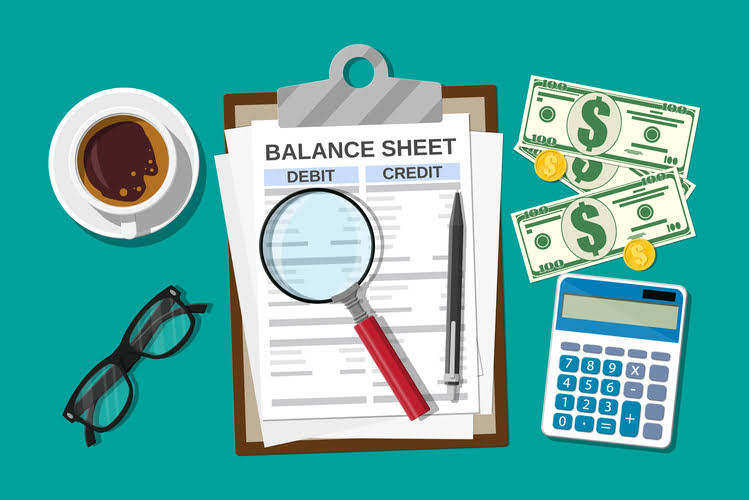
In this journal entry, the credit of the cash account is to refill the petty cash fund to its full established petty fund. At the same time, it also represents the cash outflow from the company as a https://www.bookstime.com/ result of petty cash expenses during the period. For other types of businesses, the cash shortage usually happens when dealing with petty cash.
Ask Any Financial Question
This transparency is not merely a matter of regulatory compliance but also a testament to the company’s commitment to https://www.instagram.com/bookstime_inc financial accuracy. Auditors examine these reports to understand the frequency and magnitude of discrepancies, which can serve as indicators of the effectiveness of current internal controls. They may also provide recommendations for enhancing procedures to mitigate future occurrences.
How is the account Cash Short and Over used?
However, if the balance is at credit, it is treated as miscellaneous revenue instead. The cash over and short account is an expense account, and so is usually aggregated into the “other expenses” line item in the income statement. A larger balance in the account is more likely to trigger an investigation, while it may not be cost-effective to investigate a small balance. A sample presentation of the Other Expenses line item in an income statement appears in the following exhibit. After the check is cashed, the petty cash custodian normally places the money in a small box that can be locked.

Popular Double Entry Bookkeeping Examples
An examination of the account at this level of detail may show an ongoing pattern of low-level cash theft, which management can act upon. For example, fraud situations may be traced back to the people directly responsible for a cash register or petty cash box. For example, assuming that we have a cash overage of $10 instead in example 1 above, as a result of having actual cash on hand of $2,800 which is more than the cash receipts of $2,790. Because a petty cash voucher is made out for all disbursements, the total of the vouchers and the remaining cash should always equal the amount of the fund (in this case, $100). A petty cash fund is established by transferring a specified amount of cash from the general checking account to a person who is given custodial responsibility for the fund. This term relates principally to cash-concentrated businesses in the retail and banking sectors, as need might arise to handle petty cash.
- During the day sales of 1,400 are entered into the register, and a cash count at the end of the day shows cash of 1,614 as summarized below.
- Cash over and short accounts are also used widely to balance the company’s accounting records when it replenishes its petty cash account.
- It is used in businesses that use cash in day-to-day operations, for example, retail stores and restaurants.
- As you think back on this system, note that there are several internal controls in place, most notably segregation of duties, assignment of responsibility, and a reconciliation (monitoring) process.
- In contrast, when there is an overage, it is treated as income; thus we recorded on credit.
- For the past 52 years, Harold Averkamp (CPA, MBA) has worked as an accounting supervisor, manager, consultant, university instructor, and innovator in teaching accounting online.

A miscellaneous expense account used to record the difference between the amount of cash needed to replenish a petty cash fund and the amount of petty cash receipts at the time the petty cash fund is replenished. A cash short journal entry records any discrepancies between the amount of cash expected in your business’s accounts and the amount actually present. Assume the same situation except Tom only receives $99 instead of $101. Now cash is debited for $99, cash over and short is debited for $1, and the sales account is credited for $100. A firm should note instances of cash variances in a single, easily accessible account. This cash-over-short account should be classified as an income-statement account, not an expense account because the recorded errors can increase or decrease a company’s profits on its income statement.

We will not use the petty cash in a journal entry again unless we are changing this original amount. The entry to record the reimbursement would debit the expense accounts reported by the custodian. The cash short/over account is an expense account in the income statement of the business.

Financial Accounting
Role-playing scenarios and hands-on exercises can enhance the learning experience, making it more likely that employees will retain the information and apply it in real-world situations. Beyond the counter, discrepancies can arise during the cash counting process. Inaccuracies in this stage may be due to rushed counts, distractions, or simple miscounts.
- Furthermore, the physical transfer of cash from point of sale to the safe or bank can introduce variances if not properly monitored and documented.
- A cash shortage normally occurs in a retail environment when the sales are reconciled to the cash receipts in the register at the end of the trading day.
- Here, you create a new journal entry in your accounting journal and debit, or increase, each expense account by the amount of cash used by your vouchers.
- In contrast, let’s assume that during the cash count, the actual cash from the cash sales is $495 instead of $510.
- In the event that a cashier or bank teller fails by giving too a lot or too little change, for instance, then, at that point, the business will have a “cash short” or “cash over” position by the day’s end.
Ask a Financial Professional Any Question
- This collaborative approach can uncover patterns or practices that may not be immediately evident to the accounting department alone.
- The goal is to trace the origin of the discrepancy, whether it’s a simple cashier error or a more complex issue like misrecorded sales.
- Debit your cash short and over account in your journal entry by the amount of cash short.
- Audits, whether conducted internally or by external parties, provide an objective review of financial practices and can identify areas for improvement.
The insights gained from audit reports can drive strategic improvements the cash over and short account in cash management protocols, ultimately strengthening the company’s financial foundation. As the investigation deepens, it’s beneficial to engage various members of the team, leveraging their insights and experiences. This collaborative approach can uncover patterns or practices that may not be immediately evident to the accounting department alone.
To do this successfully, you need to know how to record a cash-short journal entry when needed. You must adjust your books by recording a cash-short journal entry to balance out these discrepancies. Therefore, the balance of cash short and over is on debit or credit depends on whether it is shortage or overage.
